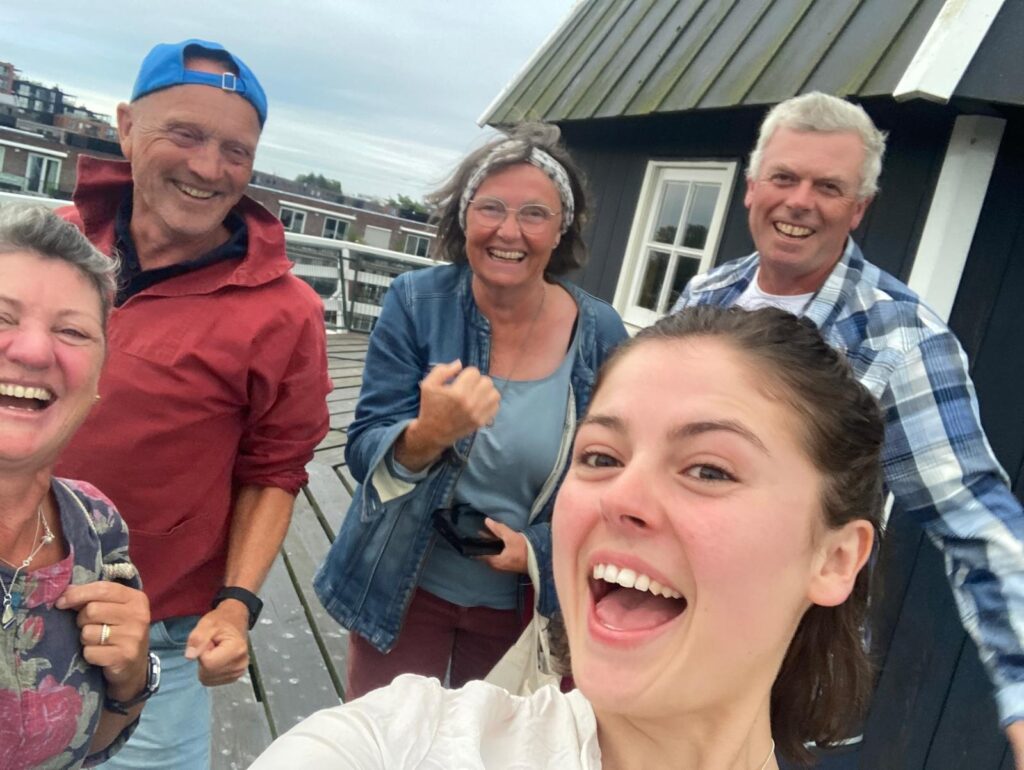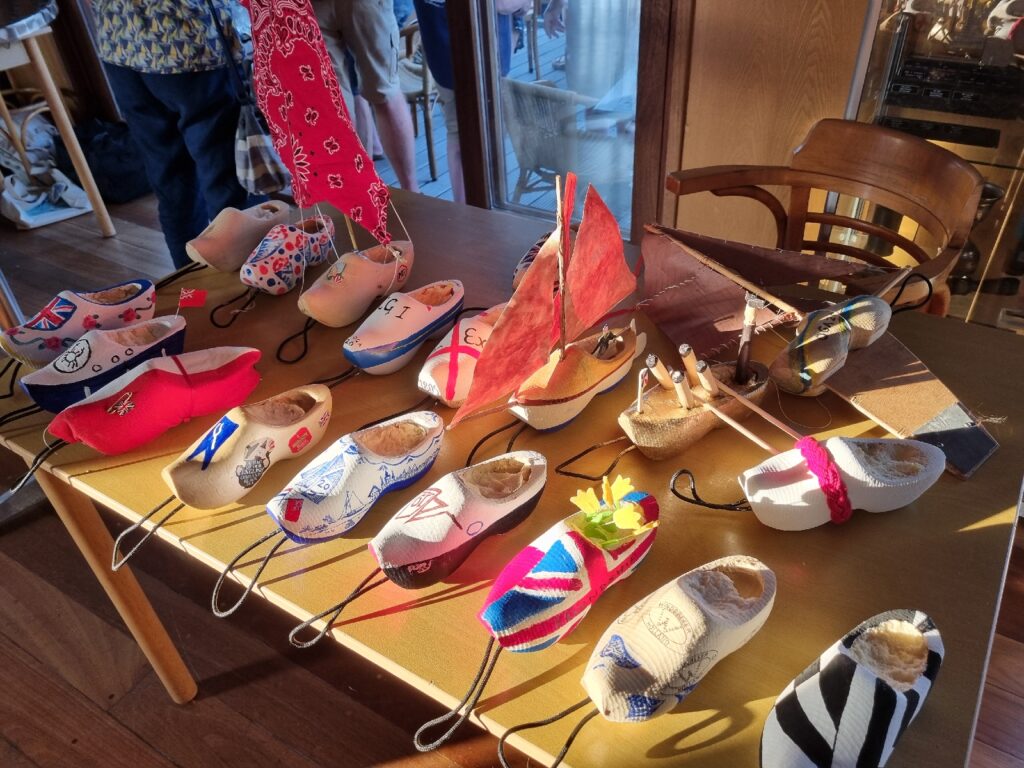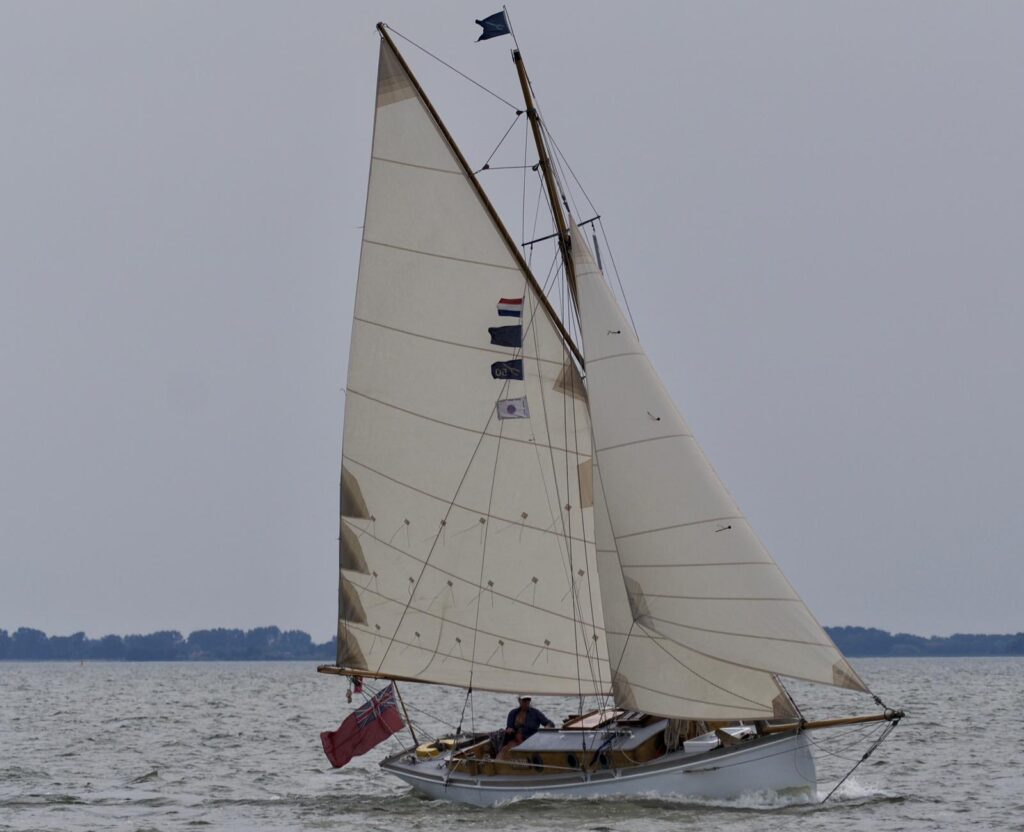The fleet continued from Kaag, stopping for a couple of days to visit Haarlem, mooring three-deep on the quayside. After exploring the town and re-stocking with provisions the fleet took the last leg of the ‘mast up’ canal route before reaching Durgerdam and the open water of Markermeer. This was the opportunity to sail again and take part in the long awaited ‘Battle of the Zuiderzee’. In this post we bring a selection of photos along with extracts from two skippers’ blogs.
“On Sunday 11 August we started early and spent all morning motoring the few miles to Haarlem, much of it through canals raised above the surrounding countryside. Our large fleet of about 40 gaffers passed through innumerable bridges, usually opening in time to let us through. For those towards the back there’s constant anxiety that the next bridge might close just as we reach it. Everyone knows that there is no difference between a glass half full and a glass half empty, but there is certainly a big difference between a bridge half closed and one half open. Reaching Haarlem, the gaffers moored three deep along the quayside in the centre of town the large historic town. We visited the most impressive Great Church of St Bavo dating back to the late 16th century. There were ship models in the style of the day given to the church by ship-owners to bring good luck. We visited a restored windmill near the centre of town and had a guided tour to understand how it works and appreciate the skills of those who built and operated it.”
Extract from the blog: Bonita








“From Haarlem, we passed under the Spaarnespoor railway bridge and through the Rijnlsndsluis onto the North Sea canal, passing through the centre of Amsterdam and out of the Oranjesluis into the open water of Markermeer. This is a body of fresh water, separated by a dyke from the IJsselmeer to the north and forms part of the former inland sea, Zuiderzee.”









“We entered the Het Y sailing club at Durgerdam for the NL20 OGA party. With formalities and many beers exchanged between Dutch and English fleets, the rules of engagement for the following day’s ‘Battle of the Zuiderzee’ were exchanged. Each boat had been decorating a clog, which was to be towed astern on the passage to Hoorn. The object was to capture the opposing team’s clogs, whilst avoiding losing one’s own. There was very little wind as we made our way out and it was a case of ‘death in slow motion’ as one boat drew up to another, those with the biggest sails at the advantage. ‘Molly’ scored an early victory, capturing a Dutch clog. She was raided twice, ‘Bluebird’, having snagged our clog with their boat hook, dropped it and I dived in to retrieve it. On the second raid, our clog was captured by ‘Persis’.”
Extract from the blog: Molly of Mylor

You must be logged in to post a comment.